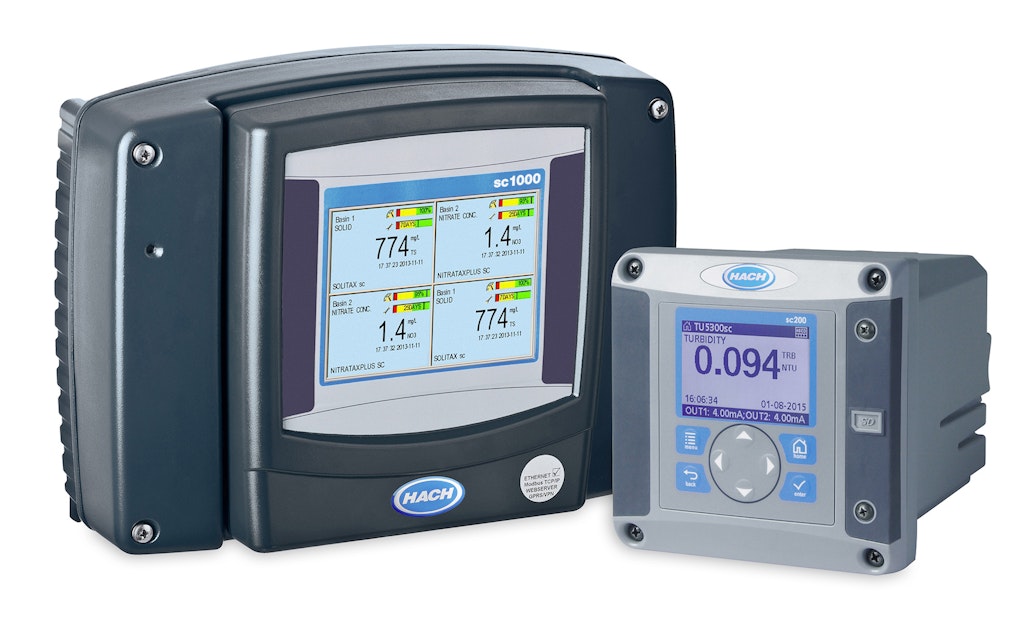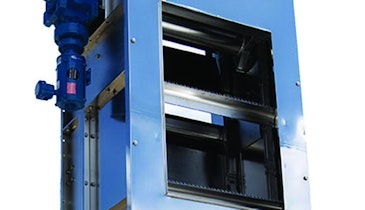Interested in Instrumentation?
Get Instrumentation articles, news and videos right in your inbox! Sign up now.
Instrumentation + Get AlertsIt should be no surprise that something as simultaneously complex and critical as wastewater treatment has a long history of technological development. Monitoring has always been critical for the industry, and while the burdens and complications around treatment continue to grow, so do the instrumentation solutions that operators depend on to carry it out.
Historically, wastewater treatment plant instrumentation was in place to maintain compliance. Over the last 20 years, monitoring has grown from simple data logging to a more predictive and strategic approach. Today, wastewater operators are utilizing analyzers to direct predictive maintenance — an approach to protecting treatment technology and tools by identifying issues before they happen, thus preserving their asset’s life span more efficiently and affordably.
Importance of predictive diagnostics
For years, reactive maintenance was about the best that treatment plants could expect. Operators relied on visual assessment, and most of the critical maintenance could only take place once an issue was readily apparent through a breakdown.
Then came the advent of preventive maintenance, giving operators the chance to confront issues before they occurred, saving time and money.
“Today, and for quite some time, a paradigm of ‘preventive maintenance’ has prevailed in most facilities,” writes Paul Brake, a mechanical engineer, in a recent issue of Water Innovations. “Preventive maintenance relies on equipment history and statistical techniques to determine a theoretical mean time to failure. Using this calculated result, a company will order replacement parts, schedule turnarounds and area shutdowns, and prepare staff or hire outside contractors for scheduled maintenance.”
Despite its popularity, however, preventive maintenance is not a perfect solution. Because this method has wastewater operators base their maintenance on statistics rather than factoring in specific operating conditions, it is not uncommon for operators to perform unnecessary maintenance or to not reach equipment in time. That is why many see predictive maintenance as the next step forward in plant operations.
“Predictive maintenance relies on monitoring the actual operational condition of critical equipment and uses the data and trends in the data to detect upcoming failures,” Brake writes. “It will allow you to improve processes, both in quality and efficiency, through better equipment operations, less downtime, and a more complete monitoring of your process conditions.”
Putting predictive diagnostics into practice
Applying predictive diagnostics is not just a lofty goal for operations to aspire to in the future. It is a solution that is already helping wastewater treatment plant operators with some very real problems that they experience on a day-to-day basis. Plants have been able to identify inefficiencies in chemical dosage by keeping real-time tabs on pH and other indicators, using this data to get out in front of a malfunction and addressing a small maintenance issue before it becomes full blown and disrupts operations. Fluctuations in chemistry have likewise pointed operations toward predictive maintenance needs for sensor cleaning or replacement.
Meanwhile, accelerometers have been used to find slight issues with bearings, and thermal scans have found areas that are getting even slightly too hot or are allowing too much heat to escape. With that information, operators can make slight modifications to bring things back to normal or can address these issues during previously scheduled shutdowns.
Wastewater utilities have even used ultrasonic thickness gauges to identify issues with pipe walls and predict needed maintenance before those pipes have a chance to rupture and create a larger issue.
Predictive diagnostic tools
Not only do instruments with predictive diagnostics exist, but these instruments can provide step-by-step instructions on how to perform maintenance tasks to help operators have full confidence that they’re completing maintenance correctly.
Those operators that have turned to predictive maintenance of their analytical instruments obviously need the right tools in order to carry it out. They have secured predictive diagnostic systems that monitor instrument performance in real time and automatically alert operators to any issues. This ultimately lets them know whether changes in wastewater measurements are true reflections of the influent’s or effluent’s chemical makeup or simply instrumentation errors.
These tools inform operators if maintenance on their wastewater instrumentation is required due to a range of issues — e.g., a calibration slope being outside acceptable limits, a sample requiring unusually high optics capacity, the detection of excessive light during sample reading, or general poor sample quality. They can also indicate when recalibration or replacement is warranted by highlighting unacceptable limits or questionable sample qualities. They can even give operators confidence that no maintenance is needed by confirming calibration, optical capacity, controlled light exposure and accurate samples.
The technology is established. The tools are readily available. The only issues to be determined are which approaches work best for each user’s unique applications.
For more information on diagnostic instruments, visit www.hach.com.






